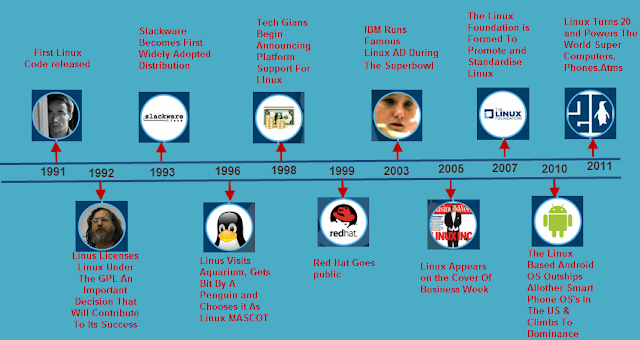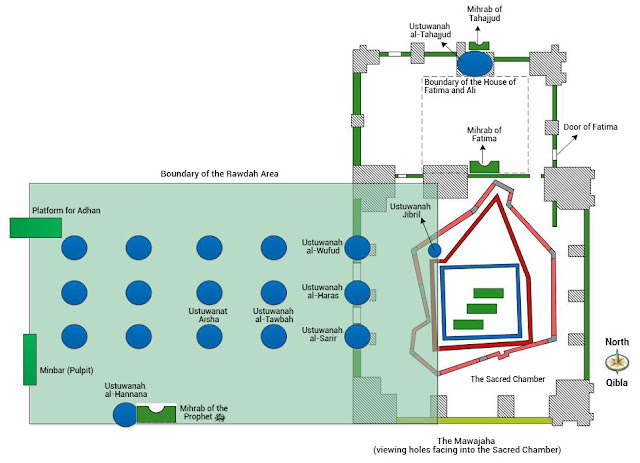Brief History of Linux
It was 27 years ago that lines posted that he was working on a free operating system but it was really just a hobby hello there my name's Gary Sims and this is Gary explains after 27 years Linux is a very dominant operating system in the world today and what I want to do is look at the history of these first 27 years to see where it all started and where we have arrived today so you want to find out more about the history of Linux please let me explain since I start with some caveats yes there are lots of things I've missed out there is obviously 27 years worth of history here and I really have just chosen some highlights that I wanted to emphasize but I would like to hear from you in the comments below if there are other things that you particularly found interesting over the last 27 years of Linux history also if you liked the t-shirt you can buy that online there'll be a link in the description below and also if you are interested in writing Android apps do check out my Android development course at digit academy.com again link in the description below ok let's get started so in 1991 Linus Torvalds posted an announcement that he's doing a free operating system it's just a hobby won't be being a professional and it works on 386 and 486 computers at this point he does note that it's free of any minutes code and that it has a multi-threaded file system but it's not very portable because it only works on the 386 now you won't understand the context of that announcement including MINIX and the history that brought us to here about the UNIX operating system then you really should watch my UNIX versus Linux video and there'll be a link also in the description below so a few people started to work together with Linus on Linux and by 1992 it was relicensed under the GNU GPL and interestingly has never moved over to GPL version 3 and there's a whole history about that that we won't get into just now now in 1993 we see the development of the sack where the next distribution and the Debian Linux distribution and of course vn is very much used today and Slackware was how many people including myself first got into Linux and I'm actually planning another video where I'm going to show you what it would like to run Slackware version one way back in 1993 so watch out for that video by the time we get to 1994 linus has concluded that the components that make up the kernel are mature enough for it to be called version 1 so we receive the release of version 1 of Linux at this point it only works on IBM compatible pcs with an Intel 386 or 486 processor a year later we now have Linux version 1.2 and for the first time it's actually been ported to other hardware including the dec alpha and I remember myself using Linux 1.2 on dec alpha machines on MIPS and of course on Sun SPARC or another year and now we're up to 1996 and version 2 of the Linux kernel has been released and the important thing about v2 is it includes SMP symmetric multiprocessing support which means you could have multiple processors now way back then the idea with dual core or quad core processor was certainly not common but having motherboards with two physical processors in them was was common it wasn't mega common but it was around and the fact this could be supported means that Linux was now able to move more into the server area where this kind of technology was more readily available this is a big milestone for the development of Linux also in 1996 because version 2 was released we see the development starts for version 2.1 and this actually establishes a pattern that sticks with us for several years and that is that the two point one and two point three and two point five were always considered to be the unstable development kernels and that actually what people should be using was two 2.2 2.4 and 2.6 the versions that were stable when a development tree was deemed enough to be stable enough it was in renamed as the next even number so 2.1 became 2.2 and then development started on 2.3 so by time 1999 comes around 2.1 has been developed we can now be renamed as 2.2 and two of the big key items there were spin locks were removable oval spin locks of course all global locks are bad when it comes terms of performance and scaling and there is frame buffer support for the console but we also see it for the first time liners passing over the mantle for maintaining older cone kernel versions to somebody else and this particular person was of course alan cox who was in responsible for maintaining 2.2 so that any serious bug fixes could be made while development continued with 2.3 by Tomica to 2001 the linux 2.4 kernel has been released this includes USB support bluetooth support and the exe file system which I'll talk about in a moment we have the world's first-ever entire Linux kernel developer summit and of course following the same model version 2.5 development begins engine thing is a version 2.4 point 15 add support for EXT 3 which is a journal file system now a journal and file system actually keeps a log of things have not yet been committed to the file system and what this enables to mean is that if the falses the system shuts down uncleanly because of a power failure for example then when it reboots it doesn't have to check the entire file system to make sure it in a known state it can do that very much quicker by looking at this log so it makes the file system more reliable and actually it is able to recover from uncleaned shutdowns much more quickly and journal file systems really today are the norm now when you get 2002 something interesting starts to happen although it's true that Linux can scale from one processor to processor and so on and so on Linus the man doesn't scale those only one of him and happened at this point he was doing all the kernel development very much using a manual set of told he was applying patches and kind of compiling all from the command line and it worked but it was a lot of hard work and as the kernel grew and as the number of contributors grew and as its influence grew he needed some tools to help him automate that process and he chose to use bitkeeper and we'll come back to bitkeeper and his choice for using that in a in 2003 we have the release of linux 2.6 and one of the big things about 2.6 was it included a new scheduler which was guaranteed to always complete its algorithms in a fixed amount of time - didn't matter whether there were ten processes running or a thousand processes running it would always be able to work out what his next job was to do in terms of scheduling in a fixed amount of time and the same was also true of the SMP scalability it didn't matter how many calls or how many processors you add it to a system Linux didn't slow down because you had to do more and more work and those were major achievements in terms of scalability for Linux now at this point the idea of the odd number kernel 2.1 2.3 word development kernels and the even numbers 1 2.4 2.6 were stable kernel changes and in fact we actually end up with 2.6 kernels for the next eight years assuming it's 2005 there start to appear some problems with the use of bitkeeper main problem was that bit keeper was a proprietary piece of software and some of the nihms community were trying to reverse-engineer the protocols so they could understand how the whole system worked eventually after several different problems linus was forced to abandon bitkeeper and the result of that was that he wrote git and of course git is used by open source advocate and in fact even by enterprises all over the world today so Lannister was not only responsible for Linux he's also responsible for git and in fact he wrote it in several months not very long time to develop such a sophisticated system and in fact he was able to release linux 2.6 points 12 solely using git haven't moved away from bitkeeper in 2006 we see the first kernel offers long term support this is with an understanding that some situations some enterprises I don't want to upgrade the kernel to new features all with homemade rather something was stable that only had critical bug fixes in it and that was 2.6 point 16 and then of course 2007 we have the release of Android and at the heart of Android is the Linux kernel in fact Android cupcake version 1.5 which was released in 2009 using its kind of two point six point two seven and today Android Pi which is version nine refuses version four point nine point eight four or newer and of course Google says there are two billion monthly active Android devices in use around the world today so there are two billion people using on a regular basis the linux kernel inside their android smartphones in amazing in 2008 we see a txt which was basically a development for me act III and one of the big things about ext4 is it can support much larger volumes and file size in fact he can support volumes up to one exabyte and file sizes up to 16 terabytes in 2011 linus released version 3 of the kernel for no other the reason other than the fact that he wanted to switch over to the new number and he has gone are the days of 2.6 point big number now it's just version 3 and actually, it was just an exercise in renaming 2012 we see the support for arms big dot little and support for the Intel i3 eight-six was removed of course arm big dog little is what we use in our Android smartphones where you might have let's say today for high-performance cause and for high energy efficiency calls and the kernel is able to switch between the cores depending on what it's doing to either offer performance or to offer greater battery saving also in 2012 course we see the launch of the Raspberry Pi and the raspberry PI's official operating system of course raspbian which is based on debian and this of course is an ARM based board which uses both arm v6 arm v7 and arm v8 which was arm b8 being the 64-bit variant across all their different products and so of what started with the i386 the Intel 3 6 way back in then now we see that arm is really dominating the Linux arena particularly in smartphones and petite in hobbyist markets like this with the Raspberry Pi you do that the 15 we see the release of a Linux version 4 and the big ticket item here is live patching so you can add security patches without needing to actually reboot the server very important in the enterprise and 2016 Linux turned 25 years old and in 2017 Linux 4.12 was released and that added support for USB type-c including for type C power delivery and now here we are in 2018 the latest kernel version at the time I'm making this video is 4.1 8 and the big ticket item there are of course our mitigations to protect against the spectra vulnerabilities there are now four of them and they are all the different packages are being rolled out into the kernel to make sure that's not a problem for from a security point of view ok so there you have it 27 years of Linux history very briefly but those are some of the highlights that I thought were important and I really hope we see another 27 years of Linux going








